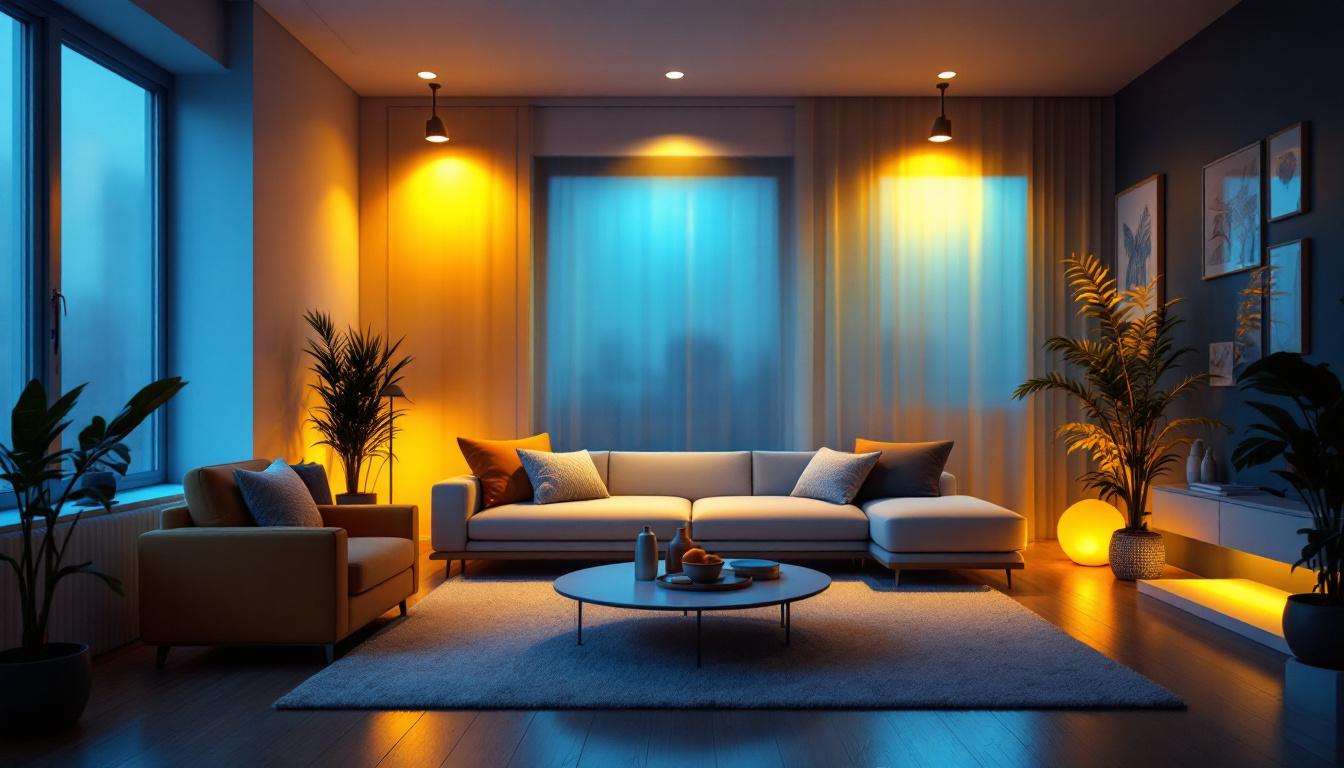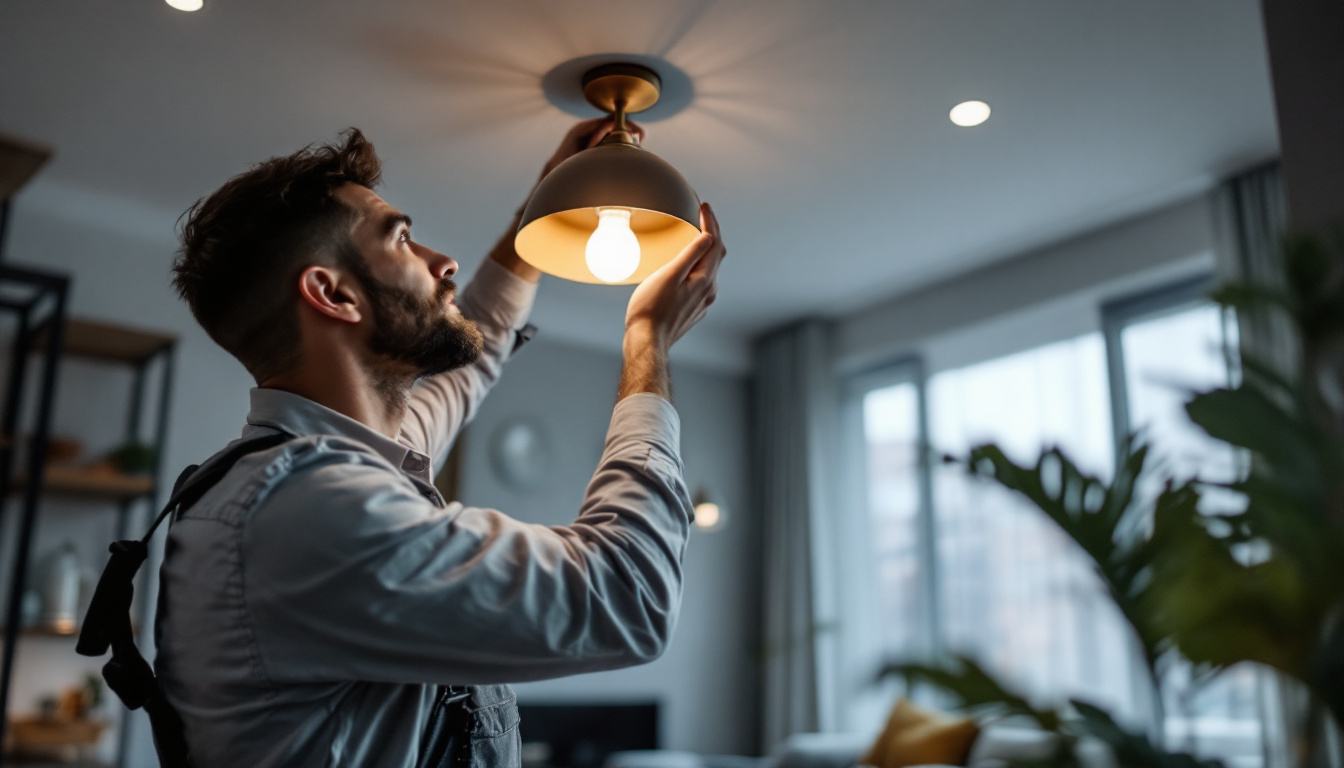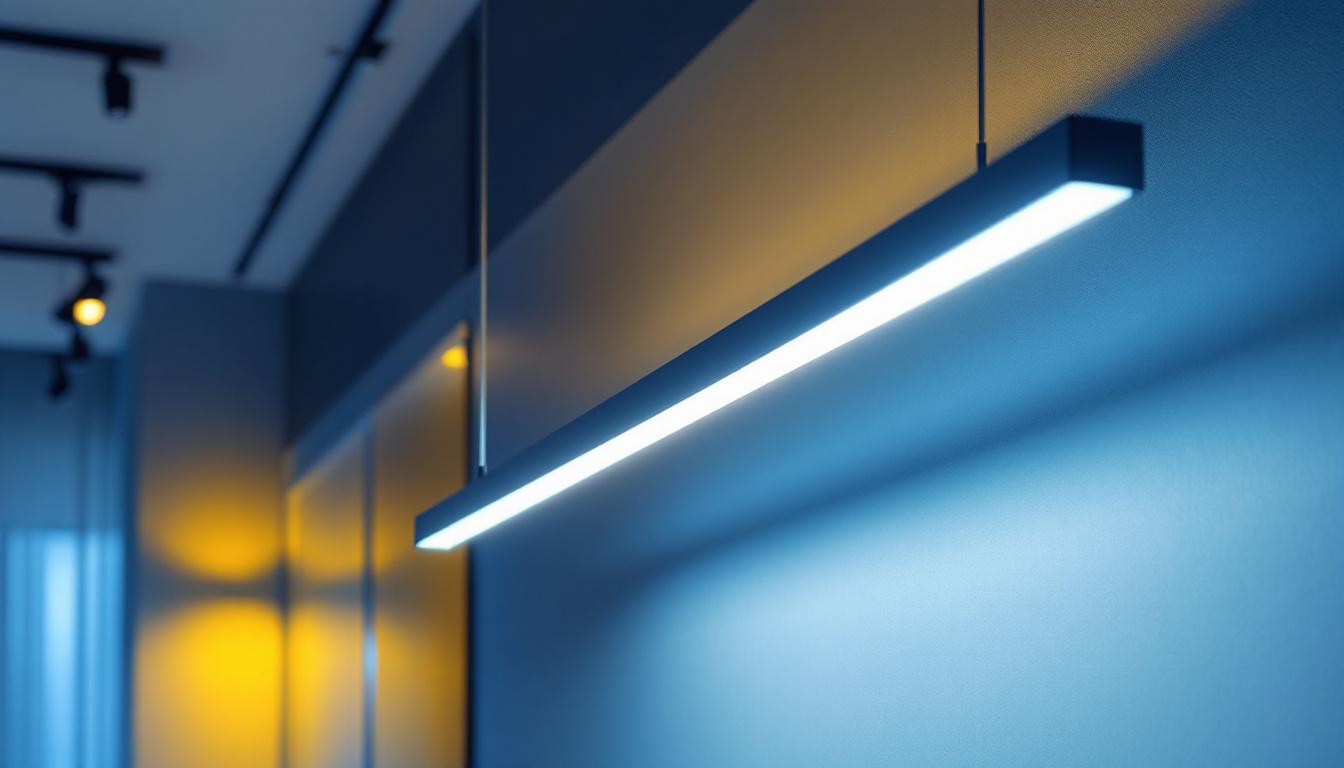
Lighting design plays a crucial role in creating functional and aesthetically pleasing spaces. Among the various options available, the 13W equivalent LED has emerged as a popular choice for contractors looking to enhance their lighting designs. This article delves into the benefits, applications, and considerations of using 13W equivalent LEDs, providing insights that can elevate any lighting project.
The term “13W equivalent LED” refers to an LED bulb that provides the same amount of light output as a traditional 60-watt incandescent bulb while consuming only 13 watts of energy. This significant reduction in energy consumption is one of the primary reasons for the growing popularity of LED technology in the lighting industry.
Energy efficiency is a key factor driving the adoption of 13W equivalent LEDs. These bulbs can reduce energy consumption by up to 80% compared to their incandescent counterparts. For contractors, this translates into lower energy bills for clients, making it an attractive selling point.
Moreover, the long lifespan of LED bulbs—often exceeding 25,000 hours—means that replacements are infrequent, further reducing maintenance costs. This longevity not only benefits clients but also enhances the contractor’s reputation for providing durable and sustainable solutions. In addition to direct savings on energy bills, many utility companies offer rebates and incentives for switching to energy-efficient lighting, further sweetening the deal for both contractors and their clients.
When it comes to light quality, 13W equivalent LEDs do not disappoint. They are available in various color temperatures, ranging from warm white to cool daylight, allowing contractors to tailor lighting designs to specific environments. This versatility is essential in residential, commercial, and industrial settings. For instance, warm white LEDs create a cozy atmosphere in living rooms and bedrooms, while cooler daylight options are perfect for workspaces that require alertness and focus.
Furthermore, LEDs offer instant illumination without the warm-up time associated with some fluorescent bulbs. This immediate brightness is particularly beneficial in spaces where lighting needs to be both functional and inviting. Additionally, many 13W equivalent LEDs are designed with advanced dimming capabilities, allowing users to adjust the brightness to suit various activities, from hosting a dinner party to engaging in detailed crafts. This adaptability not only enhances user experience but also contributes to energy savings by allowing for lower light levels when full brightness is unnecessary.
The versatility of 13W equivalent LEDs makes them suitable for a wide range of applications. Whether in homes, offices, or outdoor settings, these bulbs can enhance the overall lighting experience.
In residential settings, 13W equivalent LEDs can be used in various fixtures, including ceiling lights, sconces, and recessed lighting. Their ability to provide warm, inviting light makes them ideal for living rooms, bedrooms, and dining areas.
Additionally, the energy savings associated with these bulbs can be a significant selling point for homeowners looking to reduce their carbon footprint. Contractors can highlight these benefits while discussing lighting options with clients, emphasizing both aesthetics and sustainability. Furthermore, the longevity of LED bulbs—often lasting up to 25,000 hours—means fewer replacements and less waste, making them a practical choice for eco-conscious consumers. Homeowners can also take advantage of smart LED technology, which allows for customizable lighting settings and remote control through smartphone apps, adding convenience and efficiency to their daily routines.
In commercial environments, the use of 13W equivalent LEDs can enhance productivity and create a welcoming atmosphere. From offices to retail spaces, the right lighting can influence customer behavior and employee performance.
Moreover, the energy efficiency of these LEDs can contribute to a company’s sustainability goals, making them an attractive option for businesses looking to improve their corporate social responsibility profile. Contractors can leverage these points when pitching lighting solutions to commercial clients. In addition, the ability to choose from a variety of color temperatures allows businesses to create the desired ambiance; for instance, cooler tones can boost alertness and focus in workspaces, while warmer hues can create a relaxed shopping environment in retail settings. The adaptability of 13W equivalent LEDs also means they can be integrated into existing lighting systems, making upgrades seamless and cost-effective.
Outdoor lighting is another area where 13W equivalent LEDs shine. They are perfect for illuminating pathways, gardens, and outdoor seating areas. The durability of LED technology also means that these bulbs can withstand various weather conditions, ensuring reliable performance year-round.
Using 13W equivalent LEDs in outdoor settings not only enhances safety but also adds to the aesthetic appeal of a property. Contractors can create stunning outdoor lighting designs that highlight architectural features while providing functional illumination. Additionally, these LEDs can be equipped with motion sensors and timers, enhancing security and energy efficiency by ensuring lights are only on when needed. Landscape lighting can transform a garden into a nighttime oasis, allowing homeowners to enjoy their outdoor spaces after dark, while also increasing property value. The flexibility in design—from string lights to spotlights—allows for creative expressions that can complement any architectural style.
While the benefits of 13W equivalent LEDs are clear, there are several design considerations that contractors should keep in mind to maximize their effectiveness.
Color temperature plays a significant role in the mood and functionality of a space. For instance, warm white (2700K-3000K) is often preferred in residential settings for its cozy ambiance, while cooler temperatures (4000K-5000K) are more suitable for task-oriented environments like offices and workshops.
Contractors should assess the intended use of each space and recommend appropriate color temperatures to clients. This attention to detail can greatly enhance the overall lighting design and user experience.
Another important consideration is the light distribution of 13W equivalent LEDs. These bulbs can produce a wide beam angle, making them suitable for general lighting. However, for task lighting or accent lighting, the contractor must ensure that the chosen fixtures complement the LED’s output.
It’s essential to evaluate the compatibility of the LED bulbs with existing fixtures, as not all fixtures are designed to accommodate LED technology. By providing clients with the right fixtures, contractors can ensure optimal performance and satisfaction.
Many clients appreciate the ability to adjust lighting levels, making dimmable LEDs a popular choice. However, not all LED bulbs are compatible with existing dimmer switches. Contractors should advise clients on the importance of selecting dimmable 13W equivalent LEDs and ensuring that their dimmer switches are compatible with LED technology.
Taking the time to educate clients on this aspect can prevent potential issues and enhance the overall lighting experience.
The environmental benefits of 13W equivalent LEDs extend beyond energy savings. As lighting contractors increasingly focus on sustainable practices, the use of these LEDs can contribute significantly to reducing a project’s carbon footprint.
By consuming less energy, 13W equivalent LEDs help lower carbon emissions associated with electricity generation. This reduction is particularly significant in areas where fossil fuels are the primary energy source. Contractors can promote the environmental advantages of LED lighting as part of their overall sustainability strategy.
LEDs are also more environmentally friendly in terms of disposal. Unlike traditional fluorescent bulbs, which contain hazardous materials like mercury, LEDs are generally considered safe and can be recycled. Contractors can inform clients about the importance of proper disposal and recycling options for LED products.
By choosing 13W equivalent LEDs, clients not only enjoy energy savings but also contribute to a healthier planet.
The lighting industry is continuously evolving, with new technologies and trends emerging regularly. Staying informed about these trends can help contractors remain competitive and provide clients with the best possible solutions.
Smart lighting systems are becoming increasingly popular, allowing users to control their lighting through mobile apps or voice commands. Integrating 13W equivalent LEDs into smart lighting systems can enhance user convenience and energy management.
Contractors should explore smart lighting options and educate clients about the benefits of incorporating these technologies into their lighting designs. This knowledge can set contractors apart in a competitive market.
Another exciting trend is the development of tunable white LEDs, which allow users to adjust the color temperature throughout the day. This technology can mimic natural light patterns, promoting well-being and productivity in both residential and commercial settings.
By staying abreast of advancements in lighting technology, contractors can offer innovative solutions that meet the evolving needs of their clients.
In summary, the 13W equivalent LED is a powerful tool for lighting contractors seeking to enhance their designs. With its energy efficiency, versatility, and environmental benefits, this lighting option can meet the diverse needs of residential, commercial, and outdoor applications.
By understanding the intricacies of 13W equivalent LEDs, including color temperature, fixture compatibility, and smart technology integration, contractors can provide clients with comprehensive lighting solutions that elevate their spaces. As the lighting industry continues to evolve, embracing these innovations will ensure that contractors remain at the forefront of lighting design.
Ultimately, the secret to better lighting designs lies in the thoughtful application of 13W equivalent LEDs, creating spaces that are not only functional but also visually appealing and sustainable.
Ready to transform your lighting designs with the efficiency and elegance of 13W equivalent LEDs? At LumenWholesale, we provide lighting contractors with the highest quality, spec-grade lighting products at prices that can’t be beaten. Say goodbye to unnecessary markups and hello to a vast selection of reliable lighting solutions that meet rigorous industry standards. With free shipping on bulk orders, LumenWholesale is your go-to source for premium lighting without the premium price tag. Elevate your lighting projects today and discover the best value in wholesale lighting at LumenWholesale.

Discover how innovative shop ceiling lights are revolutionizing the lighting industry, enhancing efficiency and creativity for contractors.

Discover the transformative impact of LED accessories on the lighting industry.

Discover how suspended linear light fixtures can transform your space and elevate your lighting design.

Discover why LED lamps are essential for transforming your garage into a well-lit, efficient workspace.